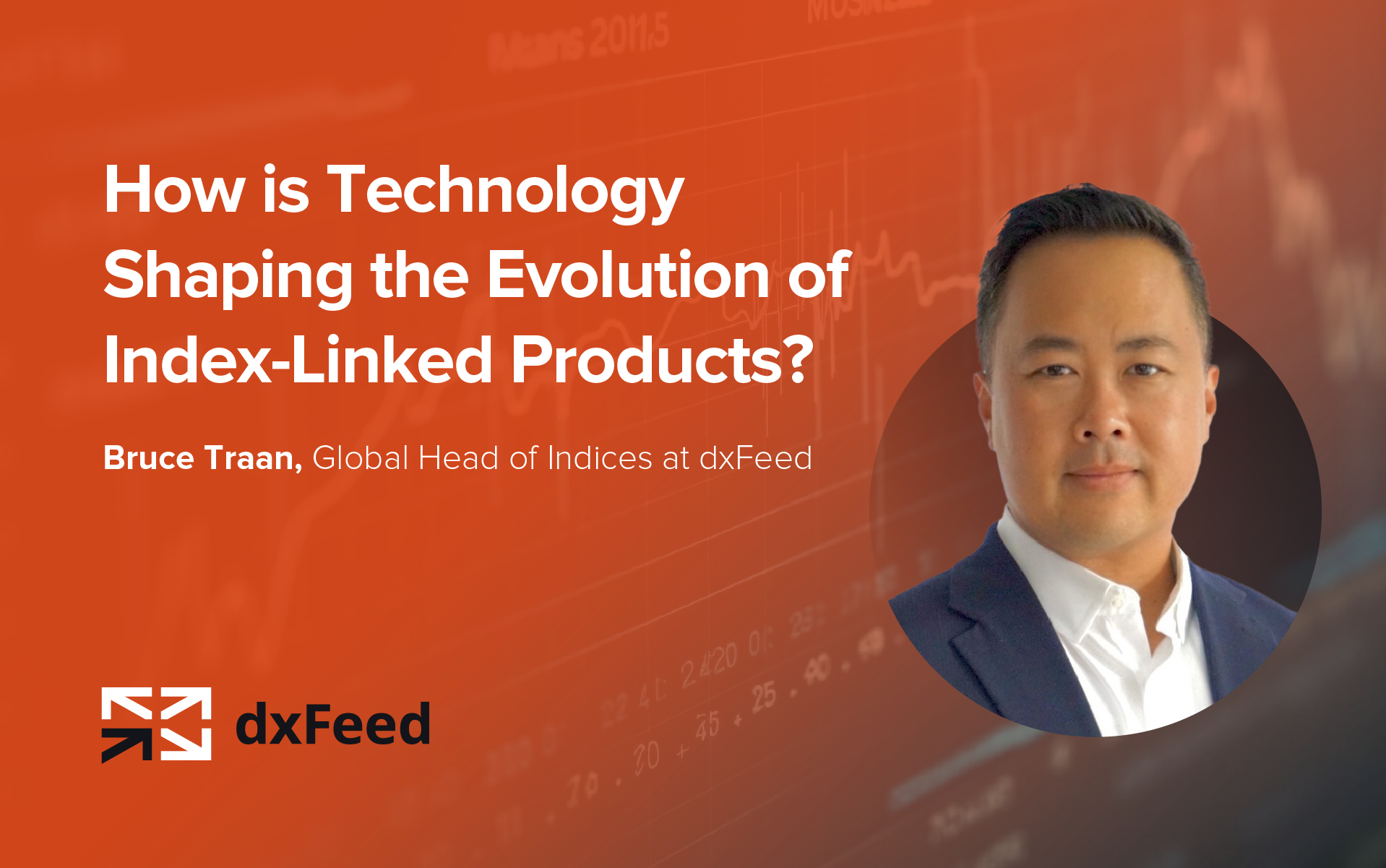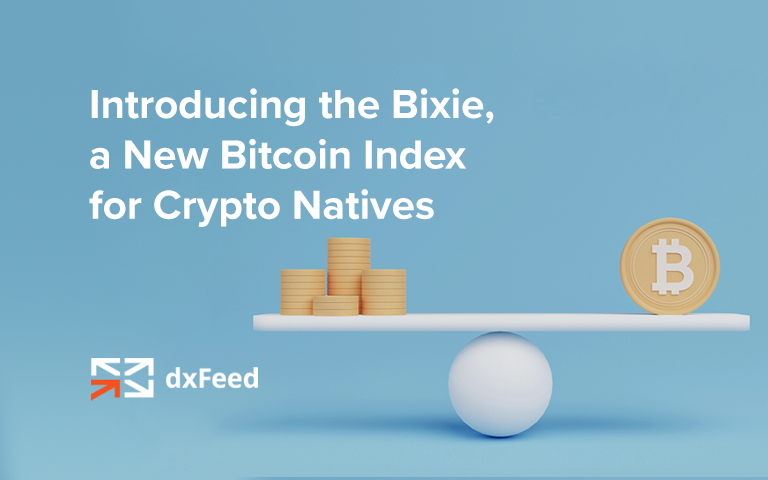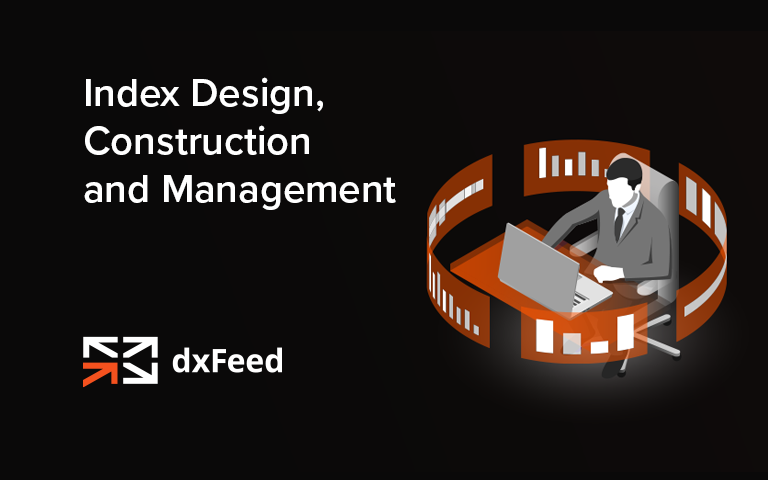
In this in-depth podcast episode, Bruce Traan, Global Head of Indices at dxFeed, unpacks the intricacies of index management, emphasising the importance of creating tailored indices to meet specific investment strategies.
Enjoy your reading!
*Stefan* (00:00:44) – Hi, I’m with Bruce Traan, the Global Head of Indices. Bruce, it’s an absolute honour to have you on the podcast. Maybe you could tell us a little bit about yourself and what you do.
Bruce (00:00:59) – Stefan, thank you so much for having me on. In terms of my background. I’ve been in the financial industry for over two decades now. Started my career as a trader for derivatives prop firm here in Chicago, left that firm and joined Cboe Global Markets in 2006 and I was there for about 15.5 to 16 years and really leading a number of different capacities over there, from research and product development, to onboarding and supporting a lot of Cboe’s proprietary products and then incubating and leading CBOE’s indexing business – Cboe Global Indexes.
Bruce (00:01:34) – I left Cboe to join a crypto data firm as their Chief Index Officer, and then worked on a startup for a little while and had that itch and most recently joined dxFeed to help them grow out their indexing business. dxFeed is really just a wonderful platform that they’ve built out in terms of data and development of technology applications to support financial products and services.
*Stefan* (00:01:57) – It’s funny. We have a similar background. I also used to be an equity derivatives trader. Who are your typical clients, and how do you help them?
Bruce (00:02:10) – Yeah. You know, it ranges the gambit. At our core, we like to solve and provide technology solutions. As we are a data solutions and index management firm. We’re agnostic on how we deliver and how we pull in our data related to multi assets. So, the spectrum of data that we do cover, as you know, ranges anywhere from global equities, futures, options on futures, options on equities, index options, commodities and digital assets. So at least in terms of what we provide is a normalized data feed and solution for investors, asset owners and asset managers throughout the world. For our index management solutions, we service product issuers as well as financial exchanges. A wide spectrum of clients.
*Stefan* (00:03:05) – That’s a really good description of what you just did. Maybe you can give an example of a big challenge you faced, where you helped the client, and how your team solved it. Is there something you could share?
Bruce (00:03:18) – On the index management side, I guess it depends on the lens that you’re looking at. Challenges can be very difficult for one client and then very simple for another. And our ethos is really creating more custom bespoke and tailored solutions. An approach here, in which do like to follow, is to take input from clients. For instance, we are the calculation agent for two CFTC and SEC regulated exchanges. So, when you put on that regulatory hat and you are calculating indexes for an exchange, it requires a lot more rigor, a lot more thorough processing and so on. So, we’ve been able to take certain ideas that they’ve had and really amalgamate them into a transparent index so they can launch products on it. When you see a value calculated on the screen, whether over our data feeds or over a major data vendor, that value is reliable. And so the regulators can be safely assured that the index is calculated as its stated and reflects its economic reality.
*Stefan* (00:04:26) – Indices have been around for probably more than 50 years, but I would say that in the last three, four, or five years, they have become more prolific, more different, and much more interesting—not just purely capital-weighted indices like the S&P 500. Why do you think that is? Why is there such a sudden boom in the production and creation of indices?
Bruce (00:04:50) – It’s been fascinating to see. Index linked products have been around for over, 4 or 5 decades now. And so when you see things evolving, from straight price weighted to market cap weighted and so on, there’s an evolution there. Obviously, a keep it simple methodology is perfect and it’s easy to understand for investors. Within the last few years, access to information has increased and investment goals have been changing quite a bit. It’s something that we call the modern investor and their appetite for more risk, their appetite for more alpha and so on; their investment goals have changed. My investment goals will be different from somebody else’s, ten years younger than me or ten years older than me.
Bruce (00:05:35) – And so when you look at it from that perspective, you have to try and provide investment solutions. Right. And you’ve been able to do that because the advent of passively linked products and passive investing as they need that benchmark. As investors are becoming more sophisticated, they want more solutions. Fortunately for us, we’ve been able to offer more customized solutions for them. I think this need will continue down the road. With the recent approval for the Bitcoin ETFs. I think that will continue to evolve. Whether it be for digital assets, more complex strategies for equities and derivatives. About a decade, maybe decade and a half ago when we were creating indexes using derivatives and options, people were approaching me and saying, you guys are crazy. You know, they’re weapons of mass destruction.
*Stefan* (00:06:22) – Said the person who used them himself. Exactly.
Bruce (00:06:26) – Selling puts.
*Stefan* (00:06:32) – Ten year puts on the S&P.
Bruce (00:06:34) – When you look at that and you go, all right, you know, the institutions are doing it, the professionals are doing it, why not make that more transparent so you can provide more access to users or investors downstream. And you’ve definitely seen the growth of derivatives with these yield enhancement equity indexes. But all that really is – is a dynamic buywrite that they’re doing. It’s been interesting being a part of those conversations and being in the industry. It all starts with that benchmark and I’m hoping that continues to evolve because we’re in a wonderful and great industry.
*Stefan* (00:07:08) – There’s a lot of creativity currently, and I’ve seen interesting developments in the index developments, and more and more people seem to get involved. But one of the challenges I always find is when trying to create something like an index, it is your data set. How good is it actually?
*Stefan* (00:07:24) – Can you actually test something on the back of it? As of today, I could probably find out what a stock is worth. But going back ten years, suddenly, there was maybe a stock split that, in my data set, is not even completely real. Change the thing. How difficult is it still these days? And I presume that one of the big challenges is how you can help your clients to have a good data set.
Bruce (00:07:47) – Just going back to your question on challenges, right? That was one of the experiences that we had initially – right at the genesis of dxFeed. We really needed optimal, normalized, and quality data. And so sourcing that from a third party vendor, you really have no control over that because essentially, garbage in, garbage out. And so from that perspective, that was the genesis idea in that we really needed quality data. And so we created, our own infrastructure to support that thesis.
Bruce (00:08:19) – We started ingesting global equities, futures, options data, just ranges the gambit on multi-asset data. Our historical data lake has over ten petabytes of historical data, normalized data and scrubbed data. We realized the importance of having a clean data set not only for our clients but for us. So if it’s good for the goose, it’s good for the gander. So from that standpoint, we’ve really taken that ethos, applied that for our clients and then apply that same, methodology and that same data rigor to what we do for our indexes. It’s important. There’s going to be a balance between simplicity and complexity. And then you take an index methodology and then apply that data to a historical calculation or indicative calculation. But if you have data that’s not clean, you’re going to have a history that’s not going to be trustworthy. When you launch the index, the historical results will not predict future results. Right.
*Stefan* (00:09:23) – But you want to test how your index would have behaved during certain times. Often, I find when you do a backtest, you find things you haven’t thought about. How did the index behave when Covid came, during volatility spikes, or during the Russian crisis? When somebody like a client comes to you as a potential customer and says, I have an idea for an index; what is your advice? Tell them you know how to go about it. when you decide, what should you keep in mind?
Bruce (00:09:52) – Through our experience, it’s going to be a bridge between simplicity and complexity. If you’re evolving or trying to create something in a new asset class or, just something that really isn’t out there yet, I think simplicity is very important. Being able to tell that story to the underlying investor or whoever is downstream from you.
Bruce (00:10:14) – Now, if it’s an industry like where we are right now, let’s just say with equities. I think that conversation is shifting towards more complexity and applying more factors, themes, just more wrappers behind new ideas on how to invest. When we approach things and say, if you know what the exact problem is that you’re trying to solve and we’re here to provide some ideas to help you solve that problem. It’s being able to provide bespoke creative solutions. That’s what our core ethos is and what we try and push down to our clients.
*Stefan* (00:10:44) – I mean, you just mentioned something. I think it’s very important to say what happens downstream and what information you want to pass on. Transparency, particularly as these indices become more complex, is quite important. And how do you sort of handle that one? Do you support that as well? And with it gets publicized, maybe not only Bloomberg. I presume your connectivity there is also important for the client.
Bruce (00:11:06) – If you are calculating an index, having transparency is of the utmost importance. We have a philosophy of ACT. Act where A is accountability, C is for communication and T is for transparency. And that all follows the guidelines and the principles set by IOSCO and, as well as, BMR for the EU. Having a framework to work around is always a lot easier to do as an agent for not only our clients, but for us, and the investors downstream. When we calculate something like an indicative history, obviously that comes from the data that goes into the calculation, how you calculate it and so on. So getting that out there for people to see and how that time series performed over different volatility regimes is important. But when the index is live, distribution is so important as well and the transparency on how you calculate and getting the index values out to as many eyeballs as possible.
*Stefan* (00:12:01) – You just mentioned backtesting. Seeing and knowing how it has performed in different volatility regimes. We talked about indices. But then there’s sometimes also the concept of a basket level. What makes it a basket? If I just calculate the basket level of ten stocks weighted at 100%. Suddenly, this can become an index. Is this purely a regulatory thing? What is the difference between basket level and index? Is it just the wording?
Bruce (00:12:35) – I guess you could probably put that under a container of a wrapper. Right. For instance, you can come up with indexes for just equities for a particular exposure. You can come up with an index with just commodities like gold, for example, digital assets, fixed income. I think from a strategic standpoint those product sets are definitely needed right now if we’re talking about more portfolio access or a more wider multi-asset approach.
Bruce (00:13:04) – You can approach things in so many different ways and the beauty of indexing is that it is in the eye of the beholder. You can drum up any idea that you want and try to make it as mechanical as possible. When you take a look at a more traditional 60/40 portfolio, that is changed quite a bit now. People are saying, hey, include digital assets in there or Bitcoin and, how much should you allocate to that position? And now you can come up with an index to really give you that perspective of, if I did do this, this is how my strategy would look like back in time. And going forward, this will be a transparent portfolio that you could theoretically follow.
*Stefan* (00:13:40) – And it takes all the emotions out of investing. Basically, depending how you feel your active manager feels on the day.
Bruce (00:13:46) – Yes, totally.
*Stefan* (00:13:47) – Do you have a favourite index you have been involved in lately that you can discuss?
Bruce (00:13:55) – So we have developed a number of indexes that really solve problems and create investment solutions to provide more transparency. Right now, from our own ideation, we’re growing that out quite substantially. We’re applying different ideas – machine learning (LLM) to the portfolio construction, index reconstitution and rebalancing. More to come on that, but we have a list of indexes that we do calculate, which you can find at indexit.dxfeed.com. I would say we’re looking to evolve that quite a bit going forward.
*Stefan* (00:14:39) – You mentioned something interesting. This leads me to what I wanted to ask you next; you mentioned, you know, artificial intelligence and machine learning to actually pick the underlying for an index. It used to be very clear where active was and what passive was. But now, with AI, where you have something that potentially at one point can reason and definitely can change his opinion about a stock depending on what happened with it, this becomes very fluid. Let’s put it this way. Have the regulators given any indications of how they see this these days?
Bruce (00:15:15) – As you create a methodology, you do want to state its economic reality. What are you trying to achieve with this methodology and the way that you communicate that is by defining the investment points. Obviously with AI it’s done within either a black box or grey box. So there’s a lot of algorithms working in play there. But if can be as descriptive as possible without essentially revealing some of the secret sauce out there, I think that will be key. We’re trying to balance that right now, and at least in terms of the indexes and family of indexes that we’re developing, at the moment. We are saying – here is the methodology, here is how we’re developing it, here’s how we’re using algorithms via AI, and here’s the index performance. The results are very compelling.
Bruce (00:16:07) – And hopefully our clients and investors downstream will find value in that.
*Stefan* (00:16:12) – I think there are huge things to come with that technology. What you can do there, and particularly as you mentioned, is that it’s very individual sometimes how you can develop and tailor a new index. It’s just not the generic market cap weighted 500 stocks. Bruce, thank you. Thank you very much for this insight. How best can interested parties get in touch with you?
Bruce (00:16:36) – Always open to have conversations and wanting to learn more about what people are doing. Also, we’re eager to see if we can help solve some problems for clients as well. You can reach me at btraan@devexperts.com. Also, you can reach us at im@dxfeed.com as well.
*Stefan* (00:16:54) – Great. Thank you very much.
Bruce (00:16:55) I really appreciate the time today. And thank you so much.


